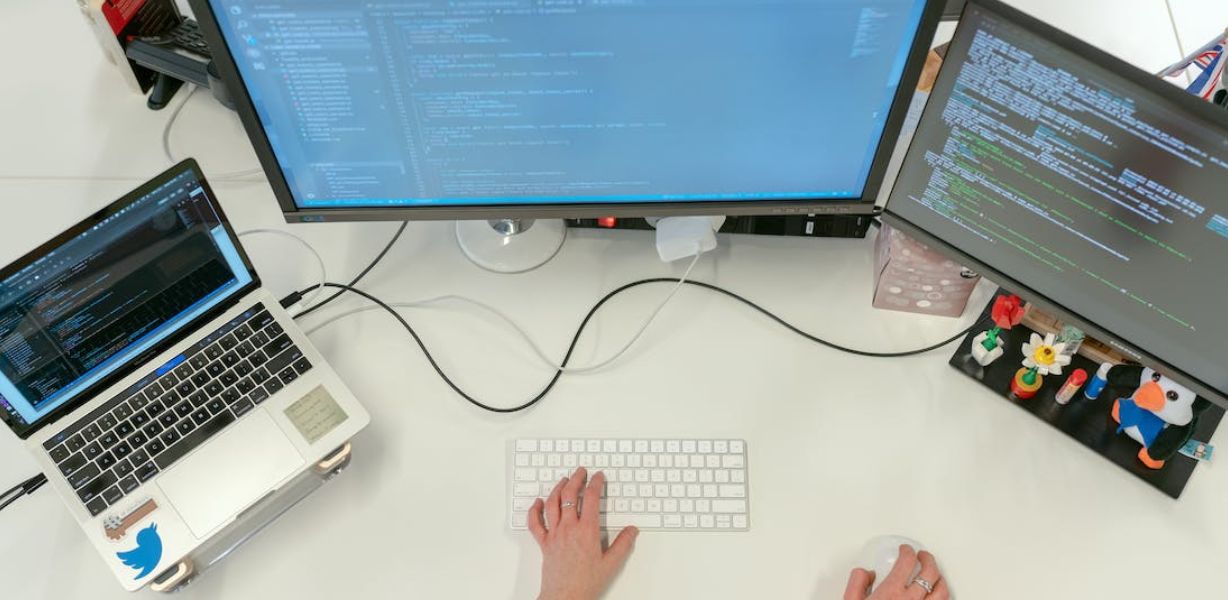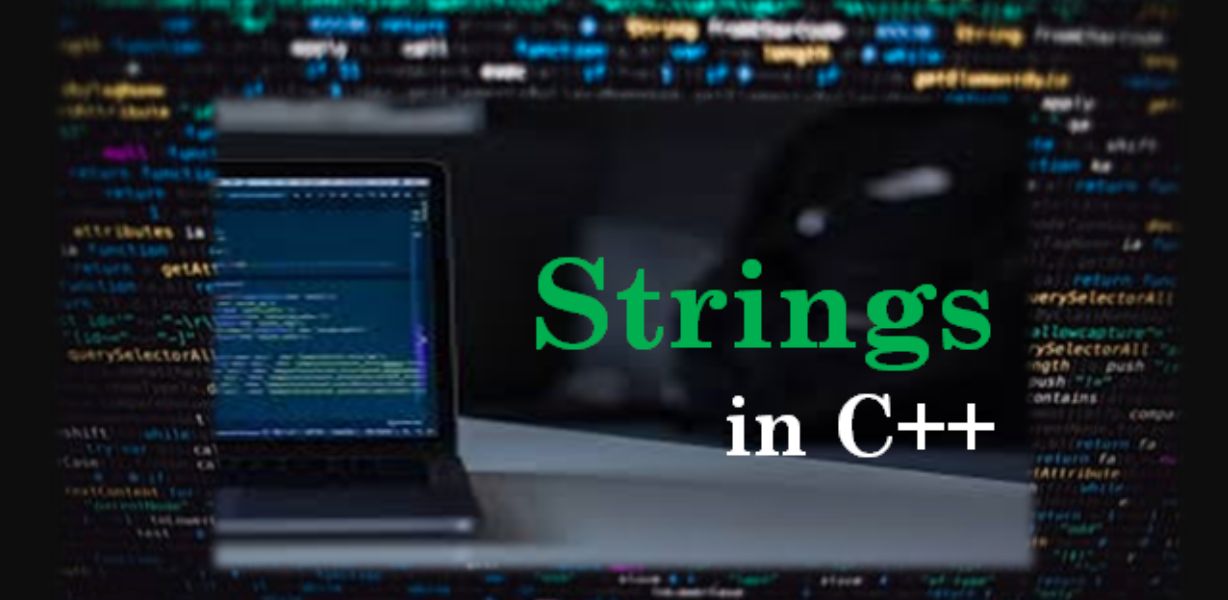Starting the journey of C++ programming reveals a world of strings and arrays facing key elements for attaining highly functional applications. With this study, we deconstruct the mysteries of strings in C++ behind arrays to dynamic memory and even more sophisticated methods. Envision picture strings as a lineup of nice people each element in an array ready to be called. Wander with us through the streets of words, converse casually with a computer, graciously manage errors and plunge into the real depths of C++ string handling. Let us untangle the wonder of simplicity in programming together.
What Are Strings in C++?
When we mention string in C++, we are referring to a group of letters and symbols living together. Think of words such as “hello” or “world”. They are strings. Now, let us assume that we communicate these strings to the computer for it to understand them. We need some way for the computer to understand that “Hey, we are dealing with words here.” So this is where finding strings in C++ begins.
Strings resemble the fun strings of colourful beads that we use to create wrist bracelets. Every bead is the character of a letter or symbol. In order to ensure that the computer is happy with our strings, we have to learn how can say “Hello Computer, here is my string.”
What are Arrays in C++?
C++ arrays can be considered containers or boxes for similar things. For instance, we have a box and place preferred snacks in it. We’d name each section of the box after snacks, wouldn’t we? Arrays work the same way. We instruct the computer to give us a container, and we name each part. This assists the computer in establishing order and locating items when we inquire about them.
Along these lines, clusters resemble our own tidbit boxes, where we can hold comparable things together. We’ll plunge into how to inform the PC concerning our holders and how intriguing things we can manage them.
Basic String Operations
Now that we’ve presented the idea of strings, we should play with them a piece. Consider strings adaptable playdough. We can stick them together, contrast them to check whether they’re something similar, or even cleave them into more modest pieces. These activities are the essentials of working with strings in C++.
We’ll investigate how we can consolidate strings, check assuming they match, and perform other straightforward yet strong tasks. It resembles having a case of instruments for our string playdough, and we will utilize them to make cool things.
Arrays and Their Starting Point
At the point when we begin working with clusters, it resembles giving a name to each opening in our holder. Envision a shelf where every rack has a particular name, and we can put comparable books on every rack. Clusters are like our shelves, and each space is where we can store something.
We’ll figure out how to name these openings in our cluster, making it more straightforward for the PC to find what we’re searching for. Everything revolves around beginning with the nuts and bolts and making a coordinated framework to store data.

Magic of Strings in C++
Presently, we should discuss something magical- dynamic memory for words (strings). Imagine you have a journal, and you know precisely the number of pages that you’ll require. However, imagine a scenario in which you don’t know. Imagine a scenario in which you believe that the opportunity should be used as a need might arise.
Strings in C++ resemble having an otherworldly journal where you can add or eliminate pages at whatever point you need. We’ll investigate how to utilize this sorcery to make our projects more adaptable and adjust to various circumstances. It resembles telling the PC, “Hello, be prepared for whatever comes our direction.” Dynamic memory makes the way for vast potential outcomes in dealing with our words.
Travelling Through Words and Holders: Repeating in C++
Since we have our strings and exhibits, we should picture them as a cordial setup, similar to a line of your companions. In the programming scene, we refer to the most common way of going through this setup as “emphasizing.” It’s likened to going for a comfortable walk through the arrangement, tending to every companion individually.
At the point when we jump into the universe of strings and clusters, we want to comprehend how to actually explore through them. Like expressing hi to every companion, we’ll investigate the idea of circles in C++. Circles go about as our aides, permitting us to rehash activities easily, making it a breeze to connect with each component in our strings and holders. In this way, we should wander through our setup of words and find how to cause the computer to welcome everyone heartily.
Conversing with the Computer: Input and Output in C++
In all honesty, computers can participate in discussions. Considerably seriously invigorating? We can talk with them as well. Imagine having a well-disposed discussion with your computer, asking it for data and sharing your own considerations. In the programming domain, we allude to this as input and output.
We’re going to figure out how to ask the client for words, very much like hearing their point of view on their favoured frozen yoghurt flavour. Then, at that point, we’ll sort out some way to show the PC’s reactions, practically like having an easygoing talk. It’s similar to opening a magnificent discourse with the PC, making our projects useful as well as intuitive and locking in. In this way, gear up to start a discussion with your PC as we dive into the nuts and bolts of input and output in C++.
Fixing Mistakes: Oops Moments in C++
Oh no. Mistakes can happen to anyone, even PCs. The excellence lies in the way that we can illuminate the PC when something turns out badly and benevolently request that it offer it one more opportunity. In the domain of programming, this is the very thing we call mistake-taking care of.
Envision baking treats, and unintentionally, you utilize salt rather than sugar. Oh no. Perceiving the mistake, you correct it. Essentially, in the realm of C++, we’ll investigate normal missteps that could happen with strings and exhibits. What’s considerably more critical, however, is understanding how to get these oh-no minutes and strengthen our projects to be strong. Along these lines, get ready to embrace those little uh oh minutes and change them into significant growth opportunities.
Going a Bit Deeper: Advanced Words and Streams
For the people who are anxious to dive a piece further, we’re wandering into further developed subjects connected with strings and clusters. It resembles venturing out into the more profound finish of the pool where things become seriously captivating.
Envision looking for explicit words in a tremendous ocean of text or easily streaming data in and out like a streaming waterway. These high-level ideas include ordinary articulations and string streams in C++. We’ll demystify these modern instruments and perceive how they can raise our programming abilities. In this way, in the event that you just a little of a test and are anxious to add an additional pizazz to your coding tool stash, we should jump into the high-level waters of C++ string taking care of.
Conclusion
Dominating C++ string taking care of, from the essentials of exhibits to the complexities of dynamic memory and high-level procedures, opens a universe of opportunities for software engineers. The excursion through strings and exhibits, emphasizing through components, participating in discussions with the PC, fixing botches nimbly, and diving into cutting-edge ideas gives a strong groundwork. Embrace the effortlessness of C++ to make effective and intuitive projects. By understanding these key standards, developers can with certainty explore the domain of strings, changing uh oh minutes into opportunities for growth and investigating progressed instruments to improve their coding collection.
